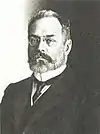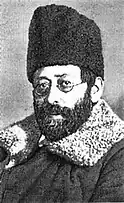| |||||||||||||||||||||||||||||||||
All 442 seats in the State Duma 222 seats needed for a majority | |||||||||||||||||||||||||||||||||
|---|---|---|---|---|---|---|---|---|---|---|---|---|---|---|---|---|---|---|---|---|---|---|---|---|---|---|---|---|---|---|---|---|---|
| |||||||||||||||||||||||||||||||||
| |||||||||||||||||||||||||||||||||
 |
|---|
|
|
Legislative elections were held in the Russian Empire in September 1912 to elect the fourth State Duma.[1]
Results
Around 51% of those elected were nobles, the highest during the Tsarist era.[1] Both the right- and left-wing increased their representation in the Duma; right-wing candidates won 153 seats and left-wingers 152, whilst the centrists, including the Union of October 17, were reduced to 130 seats.[1]
| Party | Seats | |
|---|---|---|
| Nationalists | 120 | |
| Union of October 17 | 98 | |
| Right-wing | 65 | |
| Constitutional Democratic Party | 59 | |
| Progressive Party | 48 | |
| Autonomists | 21 | |
| Russian Social Democratic Labour Party | 14 | |
| Trudoviks | 10 | |
| Independents | 7 | |
| Total | 442 | |
Aftermath
Following the elections, the Union of October 17 became an opposition party due to its harassment by the government during the election.[1]
References
This article is issued from Wikipedia. The text is licensed under Creative Commons - Attribution - Sharealike. Additional terms may apply for the media files.




